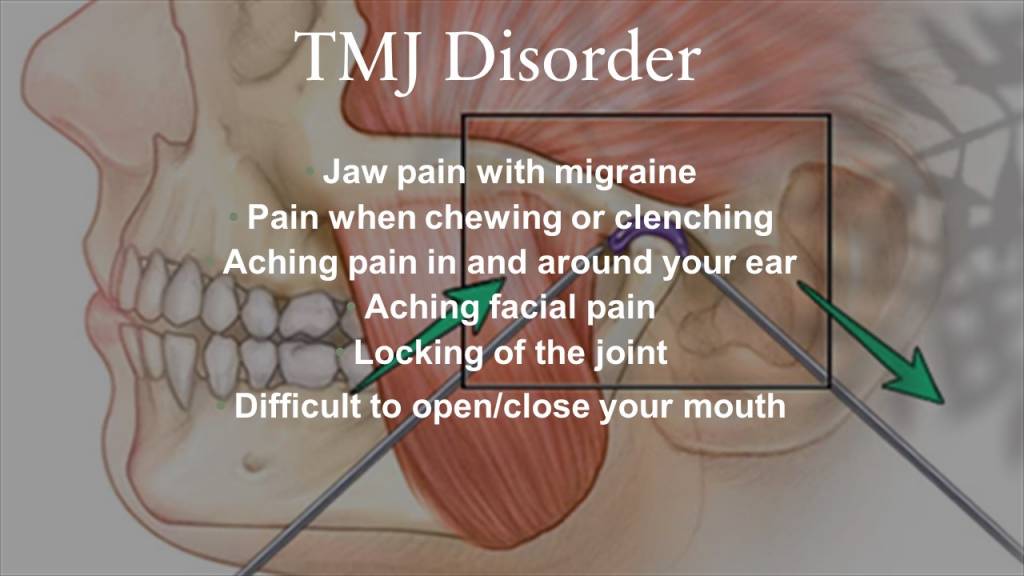
Are you experiencing jaw pain with migraine? Do you have pain when chewing, clenching at night are you wearing night guard? You may have TMJ.
What’s TMJ?
The temporomandibular joint (TMJ) is where the jawbone connects to the skull. When people say TMJ, they are often referring to pain or discomfort anywhere along the jaw, which may also include some neck muscles. The pain, on most cases, is not at the joint, a more accurate term for the condition should be “TMD,” or temporomandibular disorder. This refers to the conditions involving pain or dysfunction in the jaw point and/or surrounding tissues.
What is the cause?
The exact cause of a person’s TMJ disorder is often difficult to determine. Your pain may be due to a combination of factors, such as genetics, arthritis, or jaw injury. Some people who have jaw pain also tend to clench or grind their teeth (bruxism), although many people habitually clench or grind their teeth and never develop TMJ disorders. In most cases, the pain and discomfort associated with TMJ disorders could be temporary and can be relieved with nonsurgical treatments. Surgery is typically a last resort after conservative measures have failed, but some people with TMJ disorders may benefit from surgical treatments.
What are the Symptoms?
Signs and symptoms of TMJ disorders may include:
- Pain or tenderness of your jaw
- Pain in one or both of the temporomandibular joints
- Aching pain in and around your ear
- Difficulty chewing or pain while chewing
- Aching facial pain
- Locking of the joint, making it difficult to open or close your mouth
TMJ disorders can also cause a clicking sound or grating sensation when you open your mouth or chew. But if there is no pain or limitation of movement associated with your jaw clicking, you probably don’t need treatment for a TMJ disorder.
What are the risk factors?
Factors that may increase the risk of developing TMJ disorders include:
- Various types of arthritis, such as rheumatoid arthritis and osteoarthritis
- Jaw injury
- Long-term (chronic) grinding or clenching of teeth
- Certain connective tissue diseases that cause problems that may affect the temporomandibular joint
Treatment?
TMJ is used during talking, eating, swallowing, and other everyday activities. If this joint becomes displaced or is overworked through excessive teeth grinding, a person may suffer severe tension headaches, as well as sharp pain in the jaw. Botox, Xeomin or Dysport injectable relieves jaw tension by making muscles unable to engage in the powerful, often unconscious movement of the jaw that produces headaches and pain. This procedure is usually quick, straightforward, and effective. The injections are administered, and treatment requires no hospital stay. Most patients experience noticeable improvement within one or two days of their first treatment, although relief can take up to a week.
If you suffer from TMJ, allow us to examine the area and provide a quick treatment to address this concern. Book your next appointment here >>>

